#yellow plants australia
Explore tagged Tumblr posts
Text

delicate little daisies
#photographers on tumblr#western australia#australia#nature photography#nature#photography#original photographers#landscape#landscape photography#lensblr#yellow flowers#flower photography#flowers#flower#petals#plants#daisies#bokeh#bokehlicious#bokeh photography#wildflowers#female photographers#imiging#western australian wildflowers#australian wildflowers
226 notes
·
View notes
Text

Bearded Iris
9 notes
·
View notes
Text

#flowers#spiral#plants#mother nature#444#fibonacci#fibonacci spiral#fibonacci sequence#yellow#yellow flowers#australia#my post
2 notes
·
View notes
Text

Yellow Pigface
3 notes
·
View notes
Text




Patersonia umbrosa var. xanthina opening its flower in the morning <3
yellow flowers from aug-december
#patersonia#wa endemic sp#nature#ecology#plants#native plants#naturecore#photography#Australia#yellow#camping trip
1 note
·
View note
Photo
I have no idea how accurate this is but it is so pretty and I want one

Herbs in Europe
#so many herbs!#also fun to see a familiar name attached to an unfamiliar plant#(fireweed in australia is little yellow flowers)#(i'm not being sarcastic i love how languages evolve)#anyway maps are cool#herbs are cool too
243 notes
·
View notes
Text
"In short:
Victorian farmers and volunteers have planted 750,000 trees to restore habitat for a critically endangered bird.
The Regent Honeyeater Project has brought together volunteers from all walks of life since it was launched in the 1990s.
What's next?
An ornithologist says the project is working wonders for the species and other wildlife.
--
John Paul Murphy is not an ecologist, but he knows a thing or two about trees.
The young cattle farmer from Winton in north-east Victoria has helped plant more than 750,000 trees as part of the Regent Honeyeater Project.
"Our involvement as a family goes back to the early 1990s, when the project first kicked off," Mr Murphy said.
The regent honeyeater is a critically endangered bird known for its black-and-bright-yellow colouring.

"Back in the day, millions of these birds would darken the sky from Adelaide up to Queensland," ornithologist Maggie Watson said.
"They're quite large compared to other honeyeaters, are highly nectar-dependent, and are one of the main pollinators of eucalypt trees."
Dr Watson, based in Burrumbuttock, New South Wales, said habitat fragmentation was a major reason the bird was threatened.
"When people started clearing farmland as part of colonisation in the 1800s, they removed all the productive, nectar-producing trees," she said.
"So that essentially wiped out the regent honeyeater's main food-base."
'Great for all wildlife'
Benalla cattle farmer and Regent Honeyeater Project president Rob Richardson said agriculture had claimed its share of the environment.
"We've destroyed a lot of habitat to create grazing and cropping land to the point where there are less than 500 wild regent honeyeaters left in Australia," he said.
"So now we're trying to restore the balance.
"We propagate all the trees in our plant nursery, and then plant them across the landscape to establish vegetation corridors."
Dr Watson said the project would significantly benefit the regent honeyeater population.
"The birds need to have 'roads' to get to flowering trees like eucalypts, and those roads happen to be other trees — so the more you plant, the better," she said.
"Tackling habitat fragmentation is great for all wildlife."
Huge volunteer effort
Mr Richardson said local volunteers were at the heart of the project.
"Over the last 30 years we've had many farmers donate land to be revegetated and over 40,000 volunteers help plant all the trees," he said.
Mr Murphy said the volunteers came from all walks of life.
"At our planting days, I've met university students, doctors, lawyers, biologists … and many of them come back year after year," he said.
Mr Murphy said it was nice to have a chance to get to know with people he may not otherwise have met.
"Farming can be pretty isolating," he said.
"But when you're planting, learning, and just getting your hands dirty together, the conversations you have are really unique.""
-via ABC News Australia, December 2, 2024
#birds#ornithology#australia#honeyeater#bird photography#wild birds#birdblr#endangered species#ecosystem restoration#habitat#conservation#good news#hope
633 notes
·
View notes
Text

Need a plump bird to brighten your day? Meet the Orange-bellied Parrot (Neophema chrysogaster)! This endangered species can be spotted throughout parts of Australia, including Tasmania. It prefers salt marshes and scrublands, where it forages for plants and seeds. Males and females have green plumage with blue markings, but males tend to be brighter in color, with more distinct patches of orange and yellow.
Photo: JJ Harrison, CC BY-SA 3.0, Wikimedia Commons
#nature#natural history#animals#fact of the day#cute animals#cool animals#birds#ornithology#parrot#australia
695 notes
·
View notes
Photo
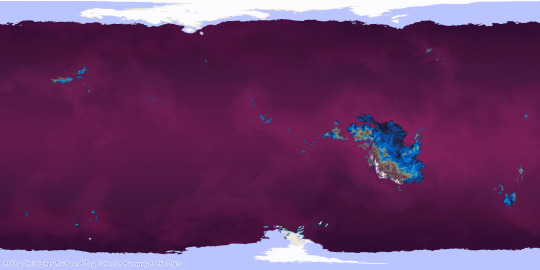
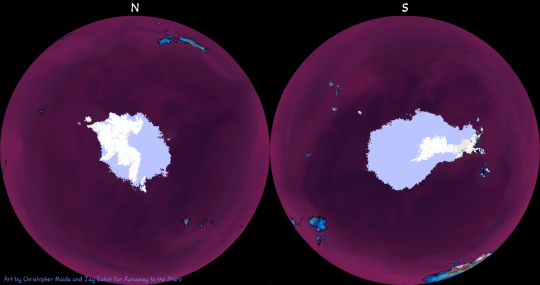
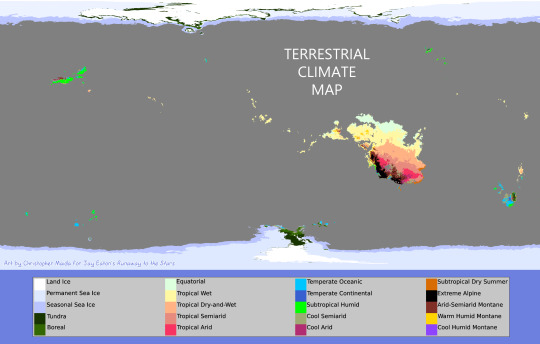
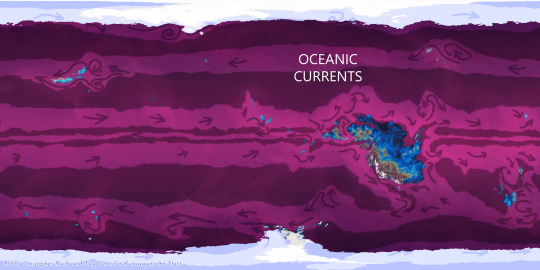
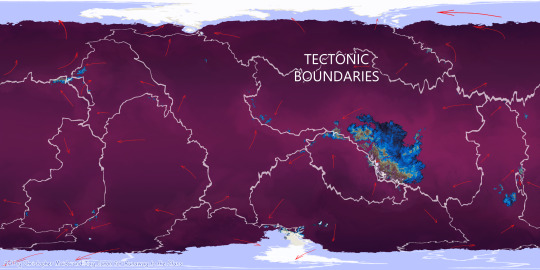
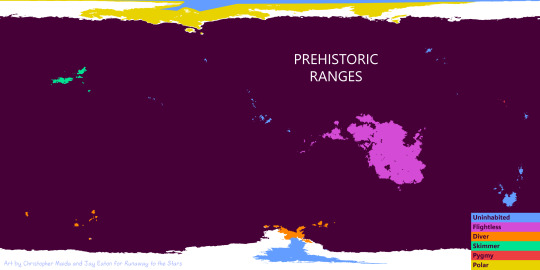
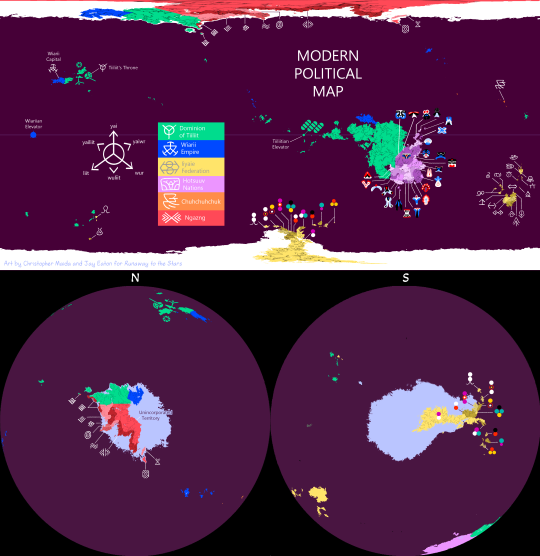
Avian Homeplanet
Star: F-class (yellow white) Vegetation: blue and black Axial tilt: 11 degrees Gravity: 1.12 g Position from star: fourth
Over 90% ocean and blasted by the light of an intense star, the avian homeplanet is prone to hot, humid weather and enormous monsoon storms. In spite of this, the planet’s very slight axial tilt gives its poles a coating of year-round sea ice, whose sifting, dune-like surface plays host to a strange variety of slow growing plants and hardy animals. On solid land, the dominant photosynthetic life is a clade of “plants” ranging from dark blue to cerulean, and a clade of sessile tube-dwelling “landworms” with black flesh and frond-like appendages. Their dark colors selectively absorb and reflect the harsh, high-UV light of the sun.
The crust of the planet also has an usually large amount of the element cobalt. It compromises over 5% of the planet’s crust, comparable to iron on Earth. Cobalt compounds generally have a much higher solubility in water than iron compounds, though, and the avian oceans are stained a purplish red from huge amounts of dissolved cobalt nitrate, cobalt chloride, and cobalt carbonate. Mineral veins of cobalt compounds can be found commonly in the planet’s rocks, forming streaks of red, blue, black, green, and sometimes yellow depending on composition. Sand and soil are sometimes stained purple and blue by cobalt salts, as well.
The clade of avians has a difficult evolutionary history to track, given the limited amount of dry land and intense development over the past thousand years. The current theory is that a flying sophont ancestor originated on the planet’s largest landmass, an Australia-sized continent, and radiated outwards to evolve into the 5 extant species of avians.
In modern history, avians have often run into space issues developing their societies, and metal as a resource has been at the center of some particularly bitter wars. Most land on the homeplanet is currently colonized by the Dominion of Tiiliit, and now in the space age, imported metal and helium is being used to add new land in the form of artificial islands and floating cities.
Avians tend to use simple, writable icons to represent their nations. Though traditionally, the Hotsuuv nations use local cultivated varieties of seal fruit as icons, and the mineral rich south pole uses dots of pigment.
Map art rendered in Photopea by the stellar @cmaidaartworkblog! Edited in CSP by me.
PATREON | Runaway to the Stars
#i refuse to name any of these smaller countries unless forced to btw. enjoy the little national icons i gave them instead.#avians#runaway to the stars#jayart#maps#speculative biology
1K notes
·
View notes
Text
Frother Moths (Genus Amerila): when these moths feel threatened, they secrete a frothy yellow substance from the glands on their thorax, producing chemicals that are distasteful to predators

Above: Amerila astreus
Moths of the genus Amerila are commonly known as "frother moths," because they can produce a pungent, unpalatable froth in order to deter predators. A distinctive "sizzling" or "hissing" sound is also emitted as the frothy substance bubbles out.

Above: Amerila crokeri, commonly known as Croker's frother moth (top), and Amerila rubripes, also known as Walker's frother moth (bottom)
The substance, which has a bright yellow or orange appearance, is secreted from the prothoracic glands located near the base of each wing, just behind the moth's eyes.
As this article explains:
If molested, resting adults produce quantities of a frothy, orange fluid from their prothoracic glands, accompanied by a sizzling sound. The froth not only has an aversive odor to humans but also contains PAs [pyrrolozidine alkaloids] which are likely taste-repelling. This phenomenon applies to all the Amerila and has been recorded from other Arctiids including Creatonotos.

Above: close-up of Amerila crokeri secreting its bright yellow froth
The adult moths are pharmacophagous, obtaining the aversive chemicals that are used to create their froth by ingesting plants that contain toxic/noxious compounds. Those compounds are then sequestered within the moth's body, where they are repurposed as a defensive secretion.

Above: Amerila astreus
The genus Amerila contains dozens of documented species, all of which are known to possess this defense mechanism. They are widely distributed throughout many different parts of the world; depending on the species, they can be found in the Himalayas, Indochina, Southeast Asia, Melanesia, Australia, or Central/Southern Africa.

Above: Amerila crokeri
Sources & More Info:
Metamorphosis Australia: The Australian Arctiid Moths
Metamorphosis Australia: Weird and Wonderful Moths
Australian Lepidoptera: Amerila crokeri
Entomo Brasilis: Defensive Froth in Arctiidae Species in the Rio Grande do Sul State, Brazil (PDF)
Moths of Australia: Adult Adaptations for Survival
Advances in Insect Chemical Ecology: The Curious Relationship Between Tiger Moths and Plants Containing Pyrrolozidine Alkaloids (PDF)
Neotropical Entomology: A Fieldwork-Oriented Review and Guide to PA-Pharmacophagy
#entomology#lepidoptera#arthropods#frother moth#genus amerila#moths#bugs#insects#defense mechanisms#chemical defense#animal facts#colorful moths#the frothy pom pom defense
126 notes
·
View notes
Text

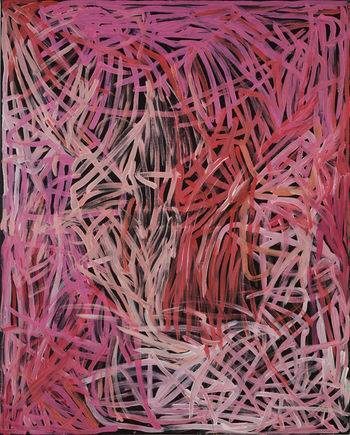
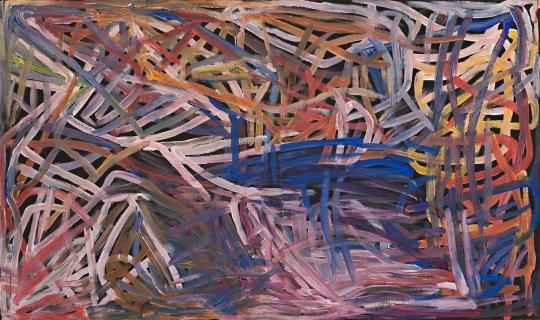
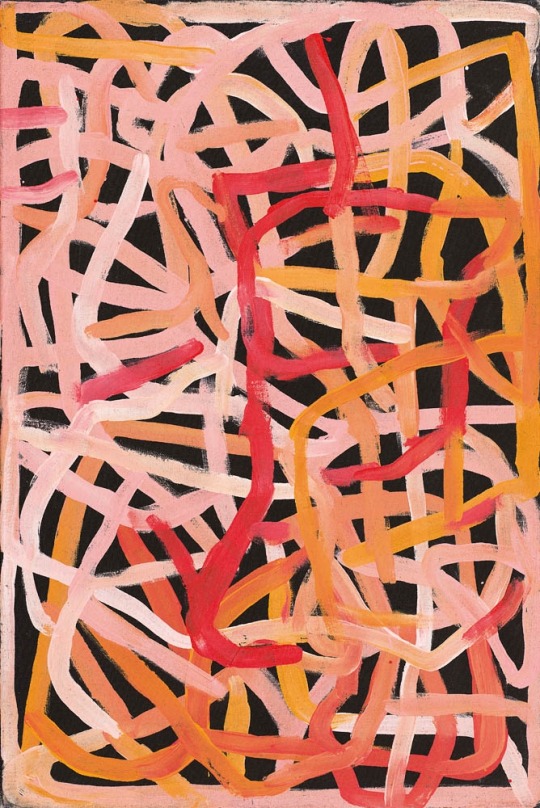
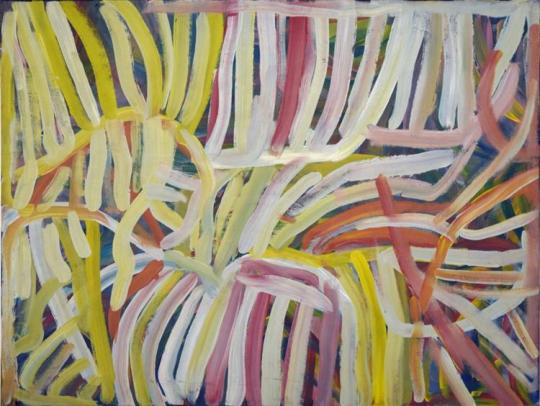
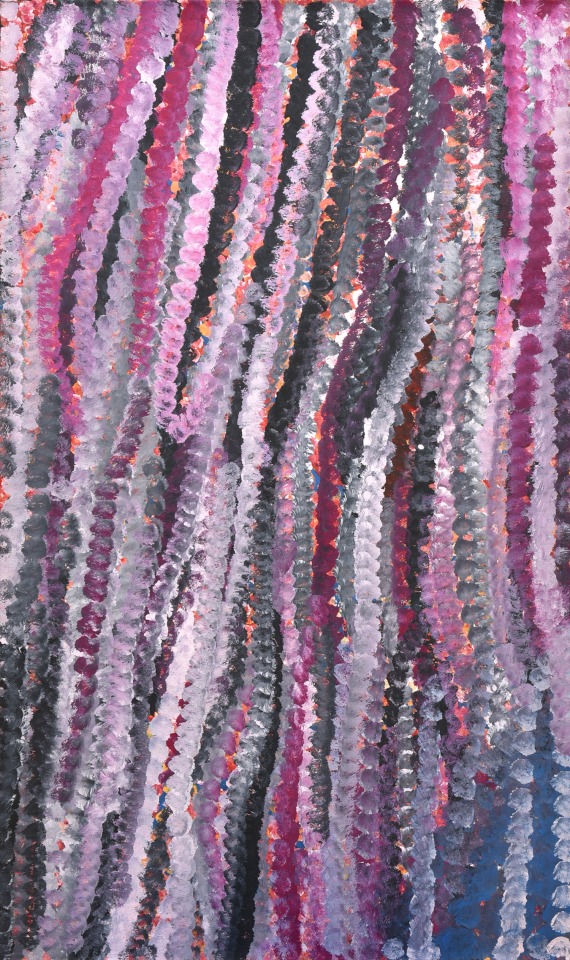

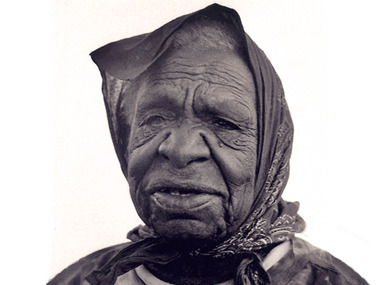
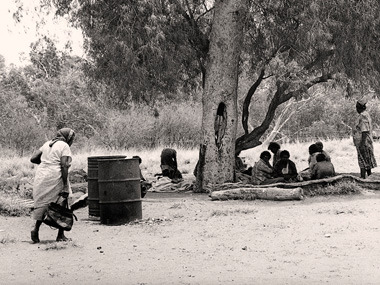
Emily Kame Kngwarreye (1910 – 1996) is considered one of Australias most significant artists. Amazingly, she only began painting with acrylics in her late seventies but in a few short years became an artist of national and international standing.
Emily was the first female painter to emerge from an art movement dominated by men and did so in a way that transformed Aboriginal painting. Employing a variety of styles over the course of her eight-year painting career, she painted her Country and sacred Dreamtime stories in a deeply emotional and expressive manner.
She was born around 1910 at Alhalkere (Soakage Bore), on the edge of the Utopia pastoral station, approximately 250km north-east of Alice Springs. Alhalkere was her fathers Country, and her mothers Country was Alhalpere, just to the east.
Despite being married twice, she had no children of her own but raised her relative Lily Sandover Kngwarreye and her niece Barbara Weir. Both becoming famous artists in their own right. Other nieces that also became famous artists include Gloria Petyarre, Kathleen Petyarre, Ada Bird Petyarre, Violet Petyarre and Nancy Petyarre.
Well before she became one of its most senior contemporary artists, Emily held a unique status within her community of Utopia. Her strong personality and past employment as a stock hand on pastoral properties in the area (at a time when women were only employed for domestic duties), reveals her forceful independence and trailblazing character.
Her age and ceremonial status also made her a senior member of the Anmatyerre language group. She was a senior custodian of cultural sites of her fathers country. She was considered the Boss Woman of the Alatyeye (pencil yam dreaming) and Kame (yam seed dreaming).
Emily started as a traditional ceremonial artist, beginning painting as a young woman as part of her cultural education. An important component of this education was learning the womens ceremonies, which are associated with in-depth knowledge of the Dreamtime stories and of womens social structures.
This knowledge is known as Awelye in Anmatyerre language. Awelye also refers to the intricate designs and symbols associated with womens rituals. These are applied to the womens upper chest, breasts and arms using fingers or brushes dipped into rich desert ochres.
Aboriginal art outside of ceremonial painting began in Utopia in 1977, when batik-making was introduced to women as part of an extended government-funded education program. In 1978, Emily was a founding member of the Utopia Womens Batik Group. In 1988, the Central Australian Aboriginal Media Association (CAAMA) completed its first project with the Utopia Womens Batik Group. This became an exhibition called Utopia - A Picture Story.
From the beginning, Emilys art stood out from the others. Rather than filling her batiks with Aboriginal symbols, she preferred patterns of layered lines and dots that revealed plant, figurative forms and cell like structures. The 88 silk batiks from this first project were acquired by the Holmes a Court Collection in Perth.
In the same year the CAAMA shop initiated The Summer Project, introducing the Utopia womens batik group to the use of acrylic paints on canvas. Among the 81 paintings completed was Emilys first artwork on canvas, Emu Woman.
Inspired by the many Dreamtime stories of which she was a custodian, Emily employed an extraordinary array of styles over the course of her eight-year painting career.
In her early works, Emily preferred the use of an earthy ochre colour palette, reflecting her experience of using natural ochres during ceremonies. Over time she expanded her repertoire to include a dazzling array of colours found in the desert landscape. Colours are significant in her paintings. Yellow, for example, often symbolises the season when the desert earth begins to dry up and the Kame (yam seeds) are ripe.
Her shifting styles also reveal her self-confidence and willingness to experiment with form, pictorial space and artistic conventions. She drew creatively from the geographic landmarks that traverse her Country and the Dreaming stories that define it. Whenever she was asked to explain her paintings, her answer was always the same:
Whole lot, that's the whole lot. Awelye (my Dreamings), Alatyeye (pencil yam), Arkerrthe (mountain devil lizard), Ntange (grass seed), Tingu (a Dreamtime pup), Ankerre (emu), Intekwe (a favorite food of emus, a small plant), Atnwerle (green bean), and Kame (yam seed). That's what I paint; the whole lot.
This is because she chose to present a very broad picture of the land and how it supports the Anmatyerre way of life. Her artworks embrace the whole life story of the Dreamtime, seeds, flowers, wind, sand and everything. Although her works relate to the modern art tradition, this resemblance is purely visual. The emphasis in Emilys paintings is on the spiritual meaning, based in the tradition of her people.
The evolving styles of Emily Kame Kngwarreyes paintings
Emily started to paint in 1988. Her early style featured visible linear tracings following the tracks of the Kame (Yam Dreaming) and animal prints associated with the Emu Dreaming. Fields of fine dots partially obscured symbolic elements.
By 1992 her paintings were so densely packed with layers of dots that her symbolic underpainting was no longer visible.
Another evolution in her painting style occurred when she began to use large brushes. She worked faster, more loosely and on a larger scale. Sometimes dragging the brush while she dotted, producing lines from the sequential dots.
By the mid 1990s she had pioneered a style of Aboriginal painting referred to as dub dub works. They were created by using large brushes which were laden with paint and then pushed into the canvas in such a way that the bristles part and the paint is mixed on the canvas.
Using this technique, she created wildly colourful artworks and her paintings became progressively more abstract. Different artists from Utopia including Polly Ngale and Freddy Purla have subsequently adopted this style.
During the last two years of her life, she used the linear patterns found on womens ceremonial body designs as the primary inspiration for her paintings. The abstracted sequential dots of colour gave way to parallel lines which were much more formally arranged. She had used lines earlier before gradually submerging them under layers of dots. This time, she created simple, bold compositions of parallel lines in strong dark colours.
The above style in turn evolved to looser meandering lines which appear to trace the shapes of the grasses and the roots of the pencil yam as they forge their way through the desert sands.
In 1996 she produced a body of work in which she depicted pencil yam dreaming using a rich ochre colour palette. In this final burst of creative energy, Emily produced a beautiful body of work known as her scribble phase. In these atmospheric paintings, lines and dots were replaced by flowing fields of colour.
https://www.kateowengallery.com/.../Emily-Kame-Kngwarreye...
209 notes
·
View notes
Text

A budding Showy Dryandra AKA Banksia Formosa with a gorgeous, glowing bud that is larger than a golf ball. All these plants and flowers I'm posting are growing wild on the 380 acre property where I live, which is mostly Australian native forest. I'm extra excited as spring approaches as this is my first flowering season after moving here last November 📷🌸💗
#australia#western australia#nature photography#photographers on tumblr#photography#lensblr#nature#landscape#original photographers#landscape photography#banksia#flowers#flower#flower photography#floral#wildflower#wildflowers#petals#plants#flowercore#orange#yellow#plant photography#plantblr#imiging#female photographers#lensbaby#velvet 85
161 notes
·
View notes
Text

Conostylis
#garden#nature#plants#flowers#flower#gardening#australia#western australia#my garden#my photography#conostylis#yellow#australian flora
3 notes
·
View notes
Text
Fucking Australian manifestations of tma fears (I saw someone cover america and I went. Oh my god time to be Australian!)
The lonely; night buses, night trains, gas stations at like. 1am because they’re the only thing open, drive in movie theatres
The vast; the blue mountains just as a whole, cablecars (yummy), the regional train lines, the ferry system, walking around the Sydney city centre in rush hour
The dark; unlit outback roads, fucking bilbies (they’re nocturnal), and my apartments dimly lit parking lot
The spiral; the random alarms that blare for no reason at my local train station, Sydney trains in general. NSW transport is the spiral. My ass is not making it off one of those trains one day. Pretty sure the carriage change doors are yellow too
The web; our spiders. Obviously. Racing horses (betting specifically) and Australia’s collective alcohol addiction !
The eye; the phone rules in nsw schools. Crowded train stations at rush hour, the isle cameras in woolies. Those people who try to interview the unwilling in public
The buried; those holes we used to make at the beach as children, animal dens, and fucking home loan debt. #high interest rates #kill me housing is going to put me into dept dept. also rip currents at beaches
The stranger; antique stores. The creepy ones, that one circus I have seen come once ever in my memory that is advertised every year. Oh and like. The backstreets of cities and those cafes that just don’t look entirely right
The corruption; ALL OF AUSTRALIAS BUGS. And also those videos where they smack bus seats and they come out with so much dust my allergies would be done for. Also fucking head lice
The flesh; the large amount of beauty salons EVERWHERE and I mean everywhere,, the prevalence of fake tan in fucking high schools. Cannibalism on the Kokoda track
The hunt; the fucking war we had with emus. Oh and dingoes and Tasmanian tigers. Also the large rabbit population of Australia
The slaughter; large amount of venomous animals in Australia, that one abandoned military hospital, every single Australians deep road rage and traffic hatred.
The desolation; the bushfires. Bushfire season. Half of Australia’s plants seeds being activated by fire and some trees encouraging fire. Oh and those people who ask randoms for lighters in public (no I don’t have one on me because I look vaguely emo but thanks for asking me right in front of my father)
45 notes
·
View notes
Text

Lobed Tickseed or Mouse-Eared Tickseed
1 note
·
View note
Text

苦菜 / Kucai (Chinese sowthistle stir-fry)
Common sowthistle (Sonchus oleraceus) is a hardy flowering plant in the family Asteraceae (alongside, for example, daisies, sunflowers, and dandelions). It is native to Europe and West Asia, but appears throughout the Americas, East Asia, Australia, and New Zealand. It is a common weed in recently disturbed soil, and sometimes pops up among and competes with cultivated crops.
Sowthistle is eaten as a bitter green in Chinese cuisine. The word "苦菜" (Mandarin Pinyin: kǔcài), from "苦" "kǔ" "bitter" + "菜" "cài" "vegetable" or "greens," is often used to refer to sowthistle—though it may also designate other bitter greens, including garlic chives.
This recipe prepares sowthistle as Chinese bitter greens are generally prepared: blanched in salted water, then fried with ginger and garlic. The sweetness and pungency of the aromatics round out the earthy bitterness of the sowthistle, making a dish that's excellent as a side with soup or rice. Here, I used it to top a fried tofu sandwich with a soy-sesame-ginger sauce.
Recipe under the cut!
Patreon | Paypal | Venmo
Identifying common sowthistle
Young plants grow from a rosette of waxy leaves with deep triangular lobes. Leaves growing from the stem are alternate (one leaf per node), simple (not divided into leaflets) and pinnatifid (divided, but the divisions do not go all the way to the midrib). Leaves have hairless midribs and clasp the stem at their base.
Stem is hairless and mostly unbranched, except near the apex. Stems terminate in clusters of flowers which are yellow when in bloom. Mature leaves and stems produce a white, milky latex when broken; not toxic, though quite bitter.





Young leaves, top two; mature plants, last three
If the leaf margins are covered in sharp spikes, you may be looking at spiny sowthistle. This plant is also edible, though it may not be worth the trouble to remove the spines to eat the mature leaves. Younger leaves, which generally form towards the center of the rosette, have softer spines and are edible without processing.


Young prickly sowthistle, left; mature prickly sowthistle, right
Common sowthistle may also be confused with common groundsel. Groundsel exudes a clear, not a milky, sap when broken, and its leaves are more deeply lobed. It is more densely branched and its leaves are waxier. Common groundsel is toxic and should not be consumed in large quantities.

Common groundsel
Ingredients:
Large bunch common sowthistle leaves (Sonchus oleraceus), preferably young
1/2-inch chunk (5g), scrubbed and thinly sliced
2 cloves garlic, peeled and sliced
Neutral oil, to fry
Toasted sesame oil, to top
Salt, to taste
Instructions:
1. Wash leaves thoroughly in a bowl filled with water. Pull leaves out to allow dirt to sink to the bottom. Repeat.
2. Boil leaves in salted water for about 10 minutes, until tender.
3. If desired, soak in cool water for 1-3 hours to remove some of the leaves' bitterness.
4. Heat oil in a wok or frying pan on medium-high. Fry ginger and garlic for 30 seconds, until fragrant. Add leaves and fry a minute or two.
5. Remove from heat and stir in sesame oil. Taste and adjust salt. Add a dash of mirin or rice vinegar to balance the bitterness, if desired.
52 notes
·
View notes